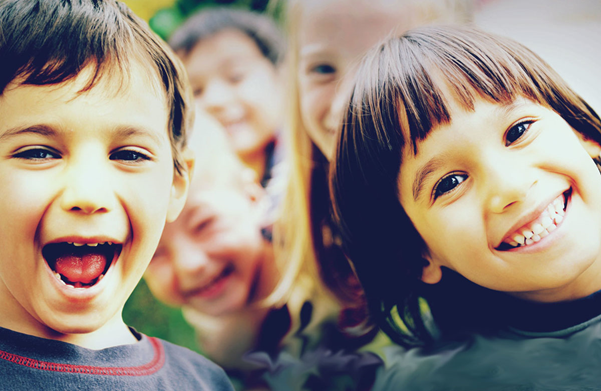
Arm Your Child With A 24 Carat Smile!
A smile is one of the healthiest amours that you can equip your child with.
A smile has benefits which touch the cognitive, the socio emotional, the inter personal and the individual potential skills of each child. It is the forerunner amongst all qualities required for making an impactful first impression and desirable body language. It is like the principal amount which you invest in a child’s first bank account hoping to use it years later for end number of reasons. A smile is exactly like that deposit, or if I may say, even better. It begins to get immediate returns, it attracts a higher interest and has huge pay offs.
It is a God gifted priceless non-verbal communication skill that Nature gifts you absolutely free of charge! In a recent research scientists concluded “that smiling can be as stimulating as receiving up to 16,000 Pounds Sterling in cash.”
Given the demonetization period that each one of us is going through, this fact is sure to bring a smile to your face.
To understand the benefits of a ‘smile’, and to know better as to why we should encourage our kids to smile more often, let us study it from various angles:
The science behind a Smile
To quote scientist Andrew Newberg, “When you smile, neuron signals travel from the cortex of your brain to the brainstem (the oldest part of our brains). From there, the cranial muscle carries the signal further towards the smiling muscles in your face. Once the smiling muscles in our face contract, there is a positive feedback loop that now goes back to the brain and reinforces our feeling of joy.” This not only relaxes your body, but it can lower your heart rate and blood pressure. It leads the receiver to feel ‘rewarded’ and the giver to feel equally ‘rewarded back’ as well
The Smile & Body language connect
Pediatricians often tell us that babies ‘smile even when in the womb’.
Within a few months of being born, before an infant can speak she/he connects with others through the act of smiling.
Be it an adult or a child, you actually generate positive energy and transmit positive energy when you smile. A smiling face is definitely more pleasing, attractive, relaxed and appears more sincere &genuine as compared to a no smile facial contour. It’s like comparing an oasis with a desert! When you smile, not only do people treat you differently but even you tend to treat people differently. There is a lot of research which suggests that seeing a smiling face activates your orbit frontal cortex, the region in your brain that process sensory rewards. In simple words it means that when you view a person smiling, you actually feel rewarded.
Smile and the world smiles back at you!
Remember the age old quote – “If you see someone without a smile, give them one of yours.”
The above holds true and works like a plague. A smile is even more infectious than a yawn. When you smile at another person, it generates an unconscious automatic response. A frown begets a frown, a scowl begets another scowl and a smile begets a replica smile. It is as simple as that. This holds true for all adults and doubly so for kids. Kids being the purest form of energy are naturally wired to express laughter, joy and smile much more often than adults.
Smile and the Preschool Connect:
As your child steps into the pre-schooling years, his /her social interaction with peers and others increases dramatically. The child is exposed to members outside his /her immediate family circle. Important life skills are learnt and imbibed within the classroom; playground and all forms of interaction . Social skills such as smiling and laughter are further honed and all studies clearly reveal that 95 per cent of these behaviours occurred when the child was interacting with others and only 5 per cent when the child was alone.Children find it easier to laugh physically in a group. No differences can be found between girls and boys in the overall frequency of smiling and laughter across all preschool age groups. So smiling and laughter increases considerably in context of playful interactions with other children and caregivers during these years. Hence it follows that preschool is the just the right breeding ground for lots of laughter and smiles!
Smiling leads to laughter and ultimately to developing a good sense of humour.
Let us understand the difference between a smile and laughter.
To put it in simple words, Smiling is personal and laughing is public. People often smile when they are reading or when they are having private thoughts.Laughter on the other hand is a social phenomenon. You tend to laugh when in public and tend to smile when in private mode. A sense of humour is the brain’s capacity to perceive, relate, and experience a situation and assess if the situation is funny or not. We acquire this judgmental skill as our mental abilities develop during mid and late childhood. So in that sense, sense of humour is a very mental and intellectual phenomenon.
Children laugh without any mental or cognitive filter. Most of their laughter is an outcome of playfulness and inherent joyfulness.
But as we grow in years, inhibitions, self-doubts, societal programming and mental roadblocks created by self, family, and society block our natural laughter response. So for an adult to laugh as freely as a child, he/she needs to work doubly hard to shed years of such programming.
So as parents, we need to ensure that children do not imbibe these roadblocks to such an extent that they find it difficult to laugh. Inhibitions to laughter once imbibed take years to clear.
On the contrary, Smile and playfulness in childhood help to develop a natural sense of humour amongst kids, leading to laughter. In fact, laughter and humour share a cause-and-effect relationship. They are in unison and cannot be separated. One leads to another.
A good sense of humour can make kids smarter, healthier, and better able to cope with challenges.
So if I were to sum up the benefits of a smiling attitude, they would be as below:
Smiling leads to positive emotional health:
A smiling persona is more approachable, sincere and attractive.
A smile facilitates relationship building.
It helps turn grim situations into bright and sunny ones.
It helps the child see the lighter side of things.
It makes the child feel rewarded.
It helps the child develop social skills and be more adept at handling social interactions.
It breaks down barriers between cultures, race, gender and economic classes.
It helps the child learn that interactions with peers and others can be fun and rewarding.
A smile and laughter eases out stranger anxiety and makes it easier to form friendships.
It ultimately helps the child build a healthy sense of humour.
Children gradually learn to laugh at their own funny physical or verbal behavior.
It builds the belief that a smile is something which can help the world set right.
It helps the child see the lighter side of things and enjoy more than crib.
Many a times it helps them see things from a perspective beyond the obvious. Fact is that everyone loves a person who makes him/her laugh. A smile or laughter leads the body into automated relaxation mode. It reads like the signal – No Danger here!
Having said that, parents, at times, need help to make a stoic child smile more often. Use the following tips and tricks to make them loosen up and smile:
Tell a funny story or read a funny book
Tickle them silly at times
Play lots of happy music
Make funny faces and surprise them at times
Do a funny jig to set the mood right
Set up a routine of practicing laughter yoga.
Help arrange play dates with peers. Social interactions facilitate laughter.
Throw a surprise. Children tend to react to surprises with peals of laughter.
Create a secret password accessible only to the two of you. The thought of secrets and surprises are very amusing to a child’s mind.
And most importantly, to be with a child- become a child. There can be nothing more amusing to a child than the sight of a parent crawling on all fours or diving under a sofa tunnel.
Wishing you loads of smiles to light up your life!
